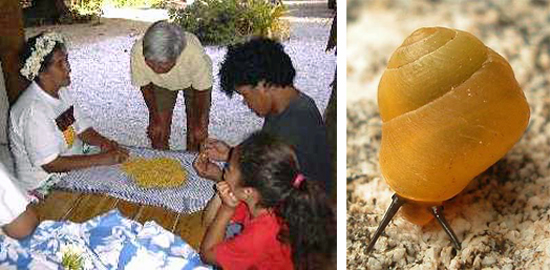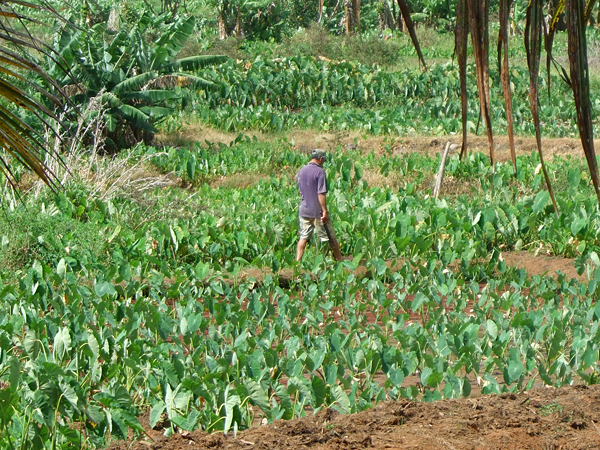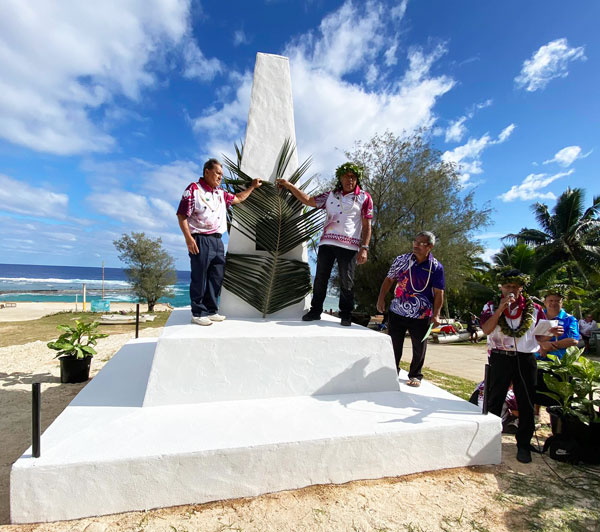

THE RARE BIRD WITH AN IDENTITY CRISIS?
The Mangaia Kingfisher (Todiramphus ruficollaris) is found nowhere else in the world, and it's name is totally misleading. It never eats fish! Like its distant cousin, the Australian kookaburra, it preys instead on skinks, insects and spiders. The colourful bird lives high up in the forest growing on the makatea. Birdlife International says there are between 400 and 700 birds on the island, but because they're unique to Mangaia, they're classified as an endangered species
Photo: Cook Islands Biodiversity Database, Gerald McCormack
SMALL BUT PERFECTLY FORMED
Mangaia is renowned for its shell neckbands or "eis". These are made from the shells of the tiny yellow snail, the pupu, which emerges only after rain. Gathering, piercing and stringing is a very time consuming business. The women of the island often give the highly prized strands away as gifts of friendship to visitors from other islands in the Group. But they are also much in demand in Tahiti and Hawaii


THE TROPICAL POTATO
Taro is sometimes called the "potato of the tropics" and the finest is said to grow on Mangaia. For those who are interested, it's high in vitamins A and C, has only a trace of fat and is particularly good for anyone with digestive problems or food allergies. As you can see from the photo, lush taro plantations and other vegetation thrive in the centre of the island at the bottom of the makatea, and in the central valley. But, much as I love the Islands, I have to say taro is an acquired taste!
"SYDNEY HARBOUR BRIDGE OF MANGAIA"
The road in the picture is near Tava'enga village and it was blasted through the makatea in 1951 using war surplus explosives. It was an amazing engineering feat. Before it, bulky goods were carried on horseback up a series of steps. Ewan Smith, MD of Air Rarotonga compares it in his coffee table book, 'The Cook Islands' to Sydney Harbour Bridge for the way it transformed travel on the island. I'm no engineer, but I marvelled at the achievement







